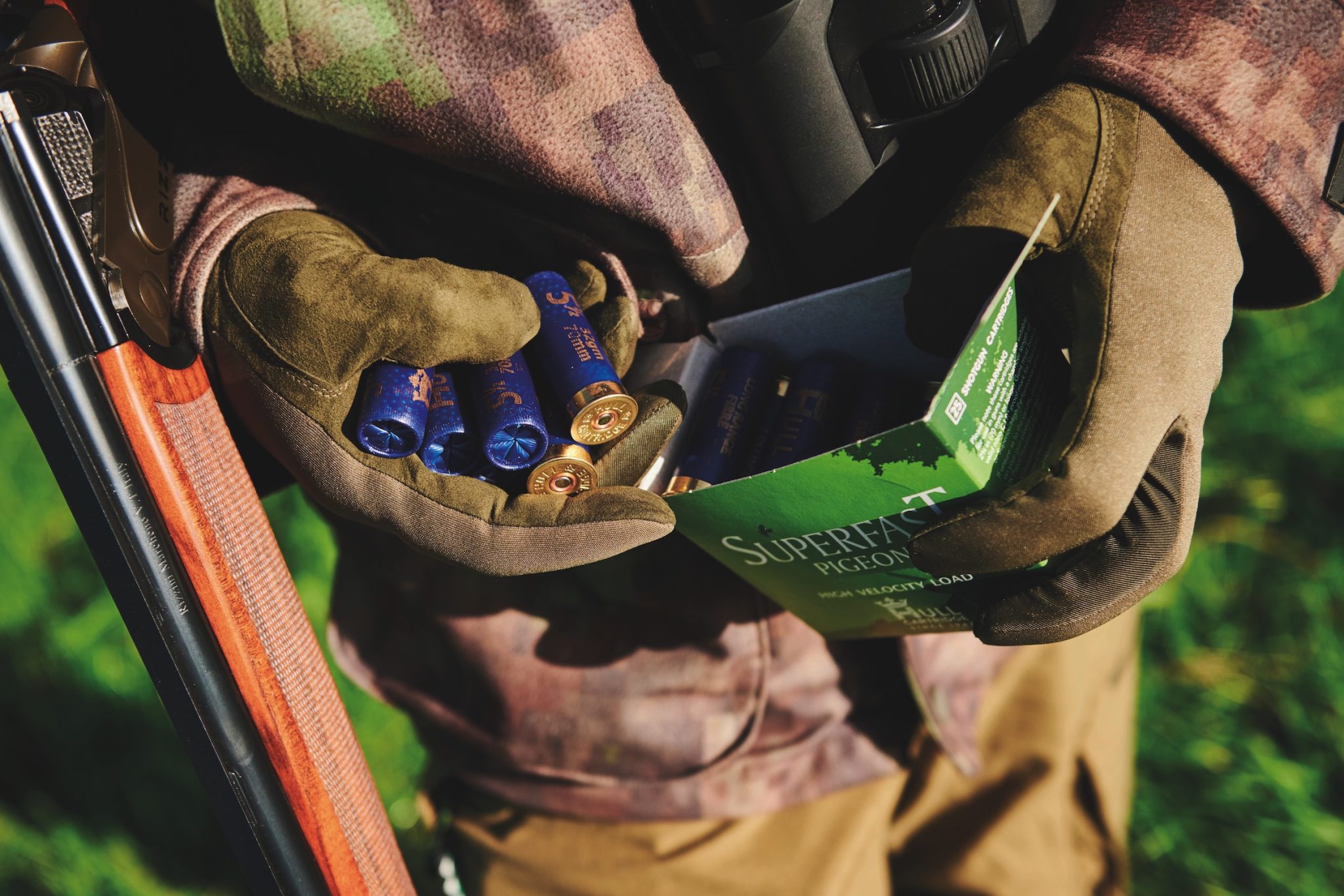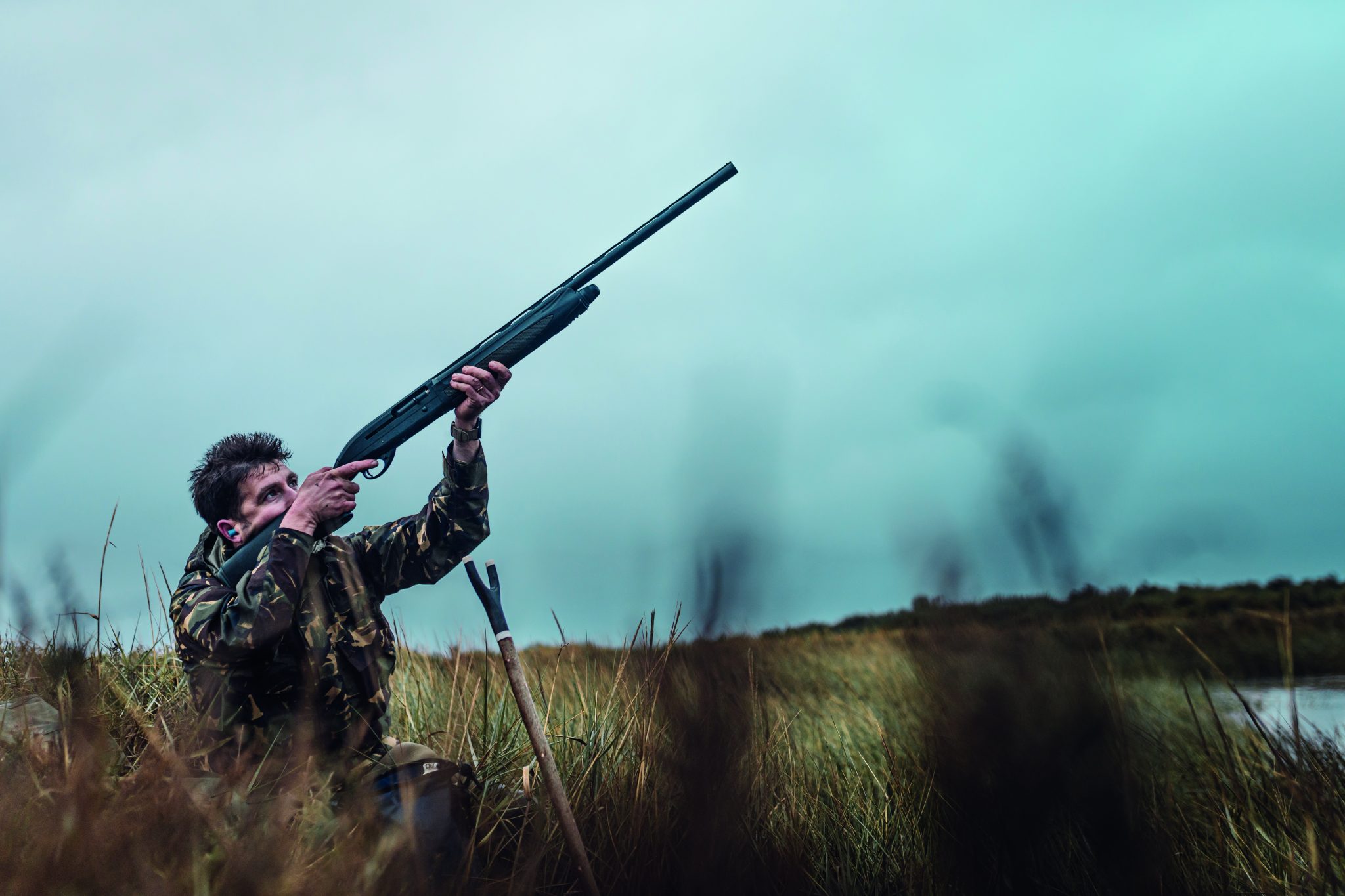Win CENS ProFlex DX5 earplugs worth £1,149 – enter here
How to shoot over your dog
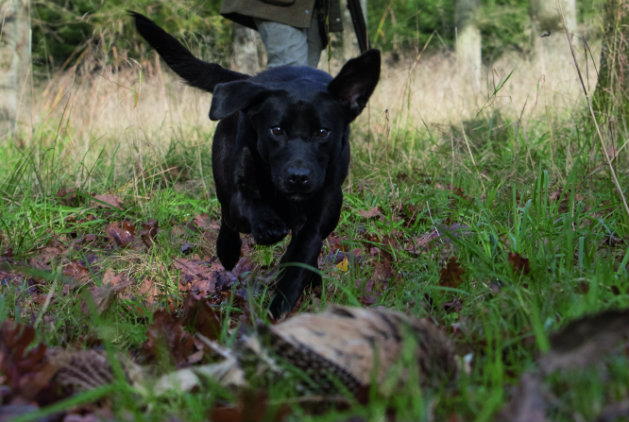
Over the past couple of months we have looked at taking your gundog into the beating line or being part of a picking-up team, but the ultimate for any gundog handler has to be shooting over your dog. It isn’t easy and not for the faint-hearted, but these guidelines should help.
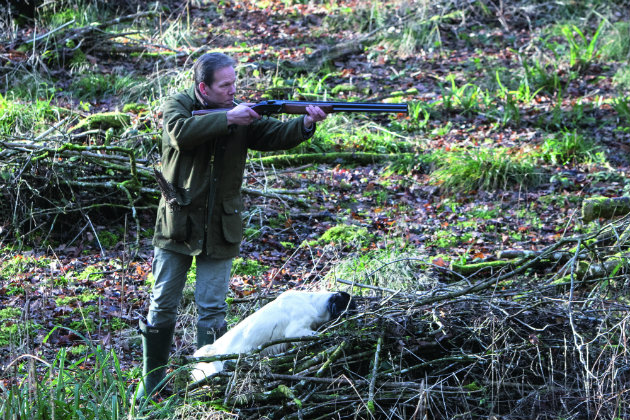
Your gundog must be steady to game – both featured and fur – accustomed to the sound of gunfire and a confident retriever (inset above)
Walked-up shooting with your dog
This kind of shooting is becoming more popular and it is where your skills as a gundog handler will be tested, as will the hours of training that you will have put into your dog.
Before you even think about shooting over your dog, it will have to be steady to game — both feathered and fur — be used to the sound of gunfire, have an ingrained, tight hunting pattern and be a confident retriever. Traditional roughshooting is really the domain of the spaniels and hunt, point, retrieve (HPR) breeds, but if you are walking-up sugar beet or fodder turnips, the retrievers really come into their own. However, that said, a well-trained gundog of any breed can be truly versatile and undertake various disciplines, but the basic requirements are the same.
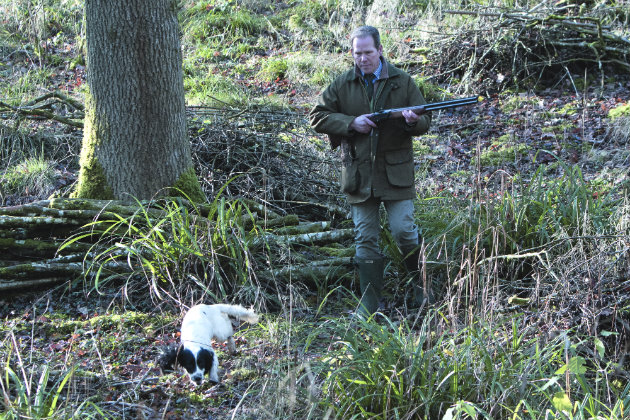
Spaniels should hunt in a controlled way, no more than 15m either side and no more than 10m in front of you
Hunting range
No matter what breed you use for your rough or walked-up shooting, they must hunt or quarter in a disciplined and controlled manner.
Spaniels should hunt no more than 15m either side and no more than 10m in front; retrievers should either walk to heel on your left-hand side or, if you are using it to hunt, it should work at the same kind of distance as the spaniels. HPRs tend to take in more ground, especially on root or covercrops.
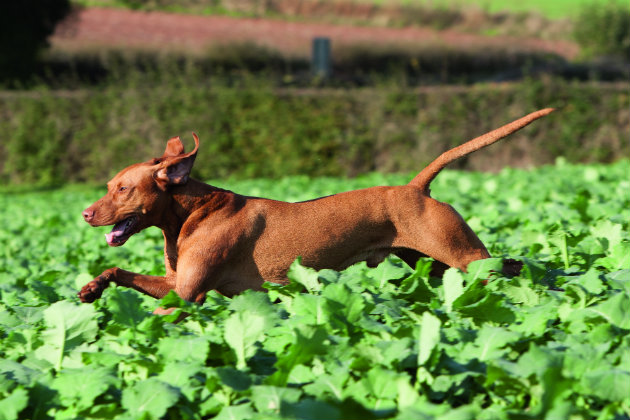
HPR breeds tend to take in more ground
There is good reason to make sure your dog hunts close to you. The effective killing range of a shotgun is about 30m, especially if you are shooting in woodland, and in the majority of cases your quarry will be flying away from you and therefore presenting you with a fairly small target. If your dog is flushing birds at 20m, by the time you have raised the gun and pulled the trigger, your target will be out of effective range and you may end up pricking the bird or missing all together.
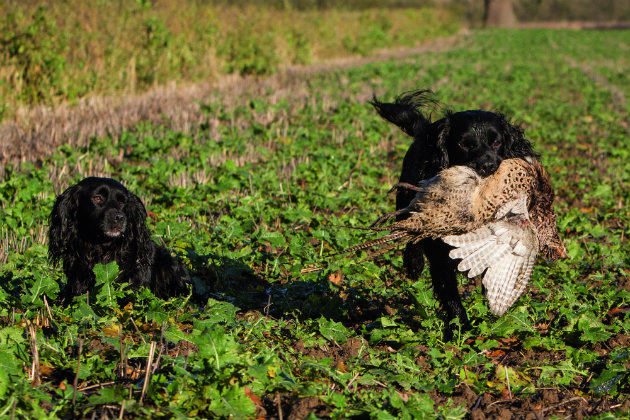
There is nothing worse than seeing someone else’s dog come flying in to steal your retrieve
Flushing game
It never fails to amaze me how tight game will sit in cover and you might get some good contact flushes right off the dog’s nose, which is exciting, or loose flushes from birds that have been disturbed. It is important that a dog stops to the flush, especially if you are shooting ground game.
If a dog has been trained to sit or just stop when it flushes game it will give you a clear chance of a shot without any fear of the dog getting in the way. There is a school of thought that, if you are roughshooting, it can be an advantage if the dog runs-in as it will get to the retrieve far more quickly and perhaps fewer runners will be lost. I can understand that to a point, especially if the dog is working in heavy cover and can’t always get a mark on a bird. I would just be uncomfortable shooting over a dog that is running-in.
Another factor to consider is that there is nothing worse than your dog having a good find and flush and then seeing someone else’s dog come flying in to steal your retrieve, or your dog doing the same to a fellow Gun.
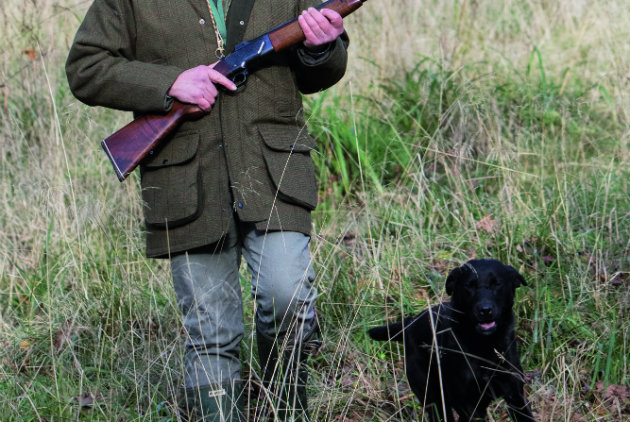
When walked-up shooting, your retriever should be at heel on your left-hand side
Position and steadiness
When walking-up with a retriever, the dog would normally be at heel on your left-hand side. Though there are no hard and fast rules as to which side the dog should walk on, traditionally it is the opposite side to that on which you carry your gun. The dog shouldn’t be jumping about, holding back or pulling ahead, and you should be able to concentrate on your shooting knowing that the dog is in a position to get a good mark on any birds that are shot.
It is no good if you have to keep correcting the dog, as you will miss shooting opportunities. Under no circumstances should you attach your dog to yourself, especially if it is because you are not confident that the dog is steady — walking over uneven ground with a loaded gun attached to any dog that is likely to run-in is a recipe for disaster.
Driven shooting
Shooting at a peg on a driven day with a dog should be fairly straightforward, but there are a few guidelines that can help to make things go smoothly. First, your dog should be totally steady to falling game and confident around the sound of gunfire. The best place to position your dog is in front so that he is looking back at you; that way he can mark any shot birds falling behind the line and you can keep an eye on him.
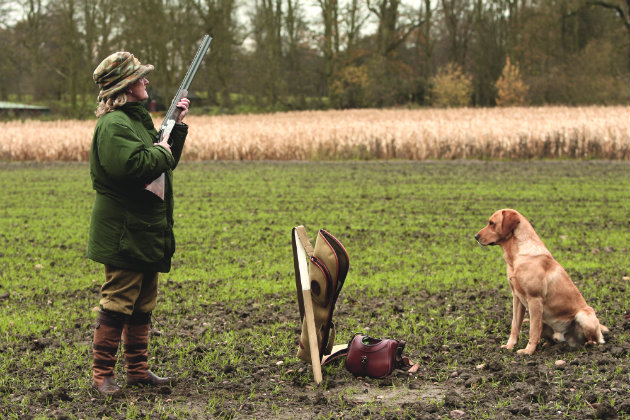
The best place to position your dog is in front, so that it is looking back and can mark falling birds behind you
If you are not completely confident that it is steady, you can use a stake or tether, but it is no good using the tether if the dog has not had the “sit, stay” command firmly embedded. There is nothing worse than a dog that is pulling and jumping about during a drive, and I have often seen a dog running amok, trailing a lead with a metal tether.
It can do itself serious damage, as well as being acutely embarrassing for the owner.
Whining and even barking at a peg can be another problem. Often this can be down to a young dog being taken out too soon and getting frustrated; it is a habit that is difficult, if not impossible, to rectify.
At the end of a drive, before sending your dog out to collect any fallen game, put your gun away so that you can concentrate on the dog, rather than letting it run around while you are sorting yourself out. Once you have cleared everything up, either put the dog back on the lead or get it at heel so that you know where it is. You can then relax and chat with your fellow Guns.
It is all about calm, careful control and preventing problems. That way you don’t have to spend hours sorting out issues that could have been prevented.
Roughshooting kit
Whether you are out hunting a few rough patches of headland and hedges or participating in a more formal organised walked-up day, you will need to take a few bits of equipment with you.
The first is something in which to carry any game that you may be fortunate enough to shoot. Traditional gamebags are still by far the most popular, but increasingly handlers are using training vests or waistcoats. These have the added advantage of plenty of pockets for mobile phones, cartridges and so on, but because you carry any shot game in the large rear pocket it spreads the weight more evenly. When you are walking long distances, this is far more comfortable.
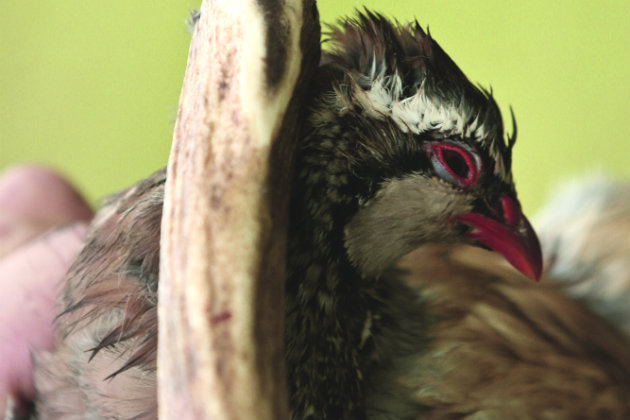
A “priest” is traditionally used to despatch pricked birds
The second thing you should always carry is the means to humanely despatch any pricked birds that your dog may retrieve. Normally, that would be a “priest” but there are various other implements on the market.
Finally, I always carry a small first-aid kit containing a couple of phials of sterile water, some bandages and a few sterile pads. You may well find yourself a long way from your vehicle and if your dog injures itself, you can at least wash out a wound and bandage it until you can get back to the car.
About the trainer
Neil Varney is a recognised Kennel Club judge for spaniels and retrievers and is the host and spaniel trainer for both the Wiltshire and Dorset gundog clubs. He runs his own training group, Twistmount Gundogs in Redlynch, Somerset, and travels the country, giving demonstrations and holding training sessions.
Related Articles
Get the latest news delivered direct to your door
Subscribe to Shooting Times & Country
Discover the ultimate companion for field sports enthusiasts with Shooting Times & Country Magazine, the UK’s leading weekly publication that has been at the forefront of shooting culture since 1882. Subscribers gain access to expert tips, comprehensive gear reviews, seasonal advice and a vibrant community of like-minded shooters.
Save on shop price when you subscribe with weekly issues featuring in-depth articles on gundog training, exclusive member offers and access to the digital back issue library. A Shooting Times & Country subscription is more than a magazine, don’t just read about the countryside; immerse yourself in its most authoritative and engaging publication.



